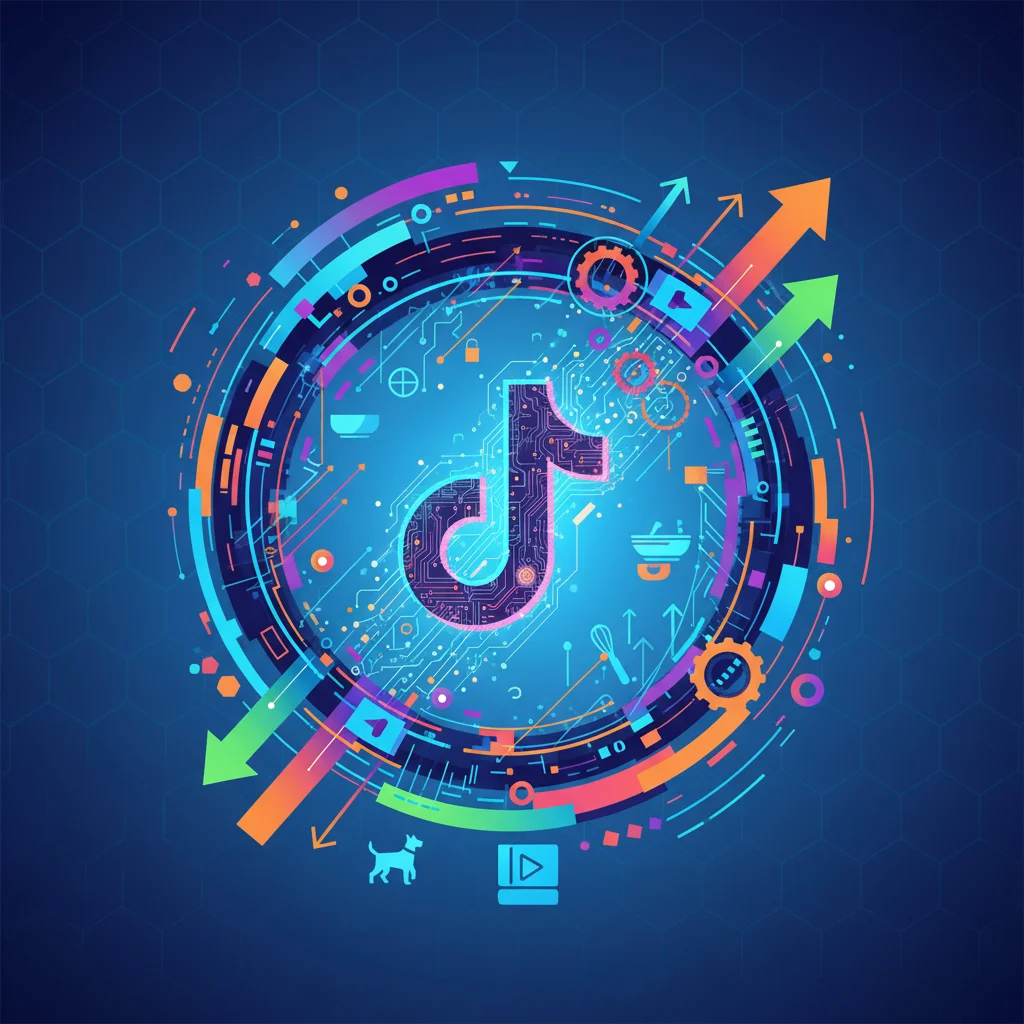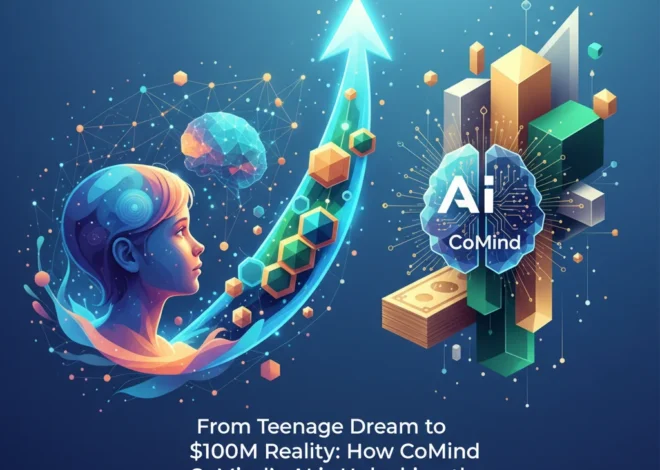
The TikTok Code: How an AI Startup Outsmarted the World
Ever found yourself scrolling through TikTok, only to look up and realize an hour has vanished? You watched a dog performing a choreographed dance, learned a three-ingredient recipe, and saw a snippet of a history lecture you never knew you needed. It feels like magic, but it’s not. It’s one of the most sophisticated and ruthlessly effective applications of artificial intelligence on the planet.
The story of TikTok is more than just a tale of a popular app. It’s a masterclass in technological disruption, corporate strategy, and high-stakes geopolitical chess. Based on a deep dive by Emily Baker-White in the Financial Times, the rise of TikTok is the story of how the pioneers of an addictive app ended up outwitting global superpowers, one 15-second clip at a time. For developers, entrepreneurs, and tech professionals, this isn’t just a trend to watch—it’s a playbook to study.
From News Feeds to Dance Crazes: The Genesis of the Algorithm
Before TikTok dominated the screens of a billion people, its parent company, ByteDance, was cutting its teeth on a different problem: news. Founded by software engineer Zhang Yiming, ByteDance’s first major success was an app called Toutiao (“Headlines”). It wasn’t a news organization; it was a news aggregator powered by a nascent but powerful machine learning engine.
While Western social media giants like Facebook and Twitter were building “social graphs”—networks based on who you know—Zhang and his team were building something fundamentally different: an “interest graph.” Toutiao didn’t care about your friends; it cared about you. It meticulously tracked every article you read, how long you spent on it, and what you scrolled past. This relentless data collection and A/B testing culture became the bedrock of ByteDance’s DNA. They were obsessed with using automation to perfect content delivery.
This early work on Toutiao was the training ground for the AI that would later power TikTok. They weren’t just building a piece of software; they were building an engine that could predict human interest with terrifying accuracy. This foundation of data-centric innovation is what allowed them to leapfrog competitors who were still focused on manual curation and social connections.
Training Your Replacement: How AI Is Forcing Professionals to Automate Their Own Jobs
The “For You” Page: A Revolution in Content Discovery
The magic of TikTok lies in its “For You” page (FYP). For a new user, the experience is startling. Within minutes of using the app, the FYP begins to morph, serving up a stream of content that feels uncannily personal. How does it work?
Unlike traditional feeds that are populated by accounts you follow, the FYP is a completely algorithmic creation. It uses a vast array of signals to decide what to show you next. This includes:
- User Interactions: Videos you like, share, comment on, or follow accounts from.
- Video Information: Details like captions, sounds, and hashtags.
- Device and Account Settings: Language preference, country setting, and device type.
The most powerful signal, however, is simply time. How long you watch a video is a crucial indicator of interest. A video watched to completion is a strong positive signal, while a quick swipe-away is a strong negative one. This feedback loop, happening millions of times per second across its global cloud infrastructure, constantly refines the model for each individual user.
Let’s compare this revolutionary model to the traditional social media approach.
| Feature | Traditional Social Media (e.g., Facebook, Instagram) | TikTok’s Model |
|---|---|---|
| Core Engine | Social Graph (Based on connections) | Interest Graph (Based on AI-predicted interest) |
| Content Discovery | Primarily from accounts you follow | Primarily from the algorithmic “For You” Page |
| Barrier to Entry for Creators | High; requires building a follower base | Low; any video can go viral if the AI deems it engaging |
| Data Feedback Loop | Slower, based on explicit actions (likes, follows) | Instantaneous, based on implicit actions (watch time) |
This model democratized content creation. A creator with zero followers could go viral overnight if their content resonated with the algorithm. This created an explosion of content and a powerful incentive for people to keep creating and consuming, a strategy that many modern SaaS platforms now try to emulate to drive engagement.
The Blitzscaling Playbook: How to Buy a Market
A brilliant algorithm is nothing without users. ByteDance’s global expansion strategy was a masterclass in aggressive, capital-intensive growth. Their most pivotal move was the acquisition of Musical.ly in 2017 for a reported $1 billion. Musical.ly, a lip-syncing app, had already captured the hearts of the Western teen market.
Instead of running it as a separate entity, ByteDance did something bold: they merged it with their own short-form video app, Douyin (the Chinese version of TikTok), and rebranded the global version as TikTok. This move instantly gave them:
- A massive, pre-existing user base in the coveted U.S. market.
- A library of licensed music, solving a huge legal and logistical hurdle.
- A team that understood the nuances of Western youth culture.
They then poured billions into marketing, flooding every other social platform with ads and paying influencers to join their platform. It was a classic blitzscaling strategy: achieve market dominance so quickly that competitors can’t react. This playbook is a crucial lesson for startups with ambitious goals: sometimes, the fastest way to grow is to acquire your competition and their market share. The sheer speed of their programming and feature deployment left rivals like Instagram Reels and YouTube Shorts playing catch-up for years.
From Code to Clinic: The Real-World Challenge of Deploying AI in Hospitals
The Geopolitical Gambit: Navigating a Superpower Showdown
As TikTok’s influence grew, so did the scrutiny. Being a Chinese-owned company operating on a global scale put it directly in the crosshairs of geopolitical tensions, particularly between the U.S. and China. The core concerns revolved around cybersecurity and data privacy.
U.S. officials worried that the Chinese government could compel ByteDance to hand over sensitive data on American citizens or use the algorithm to push propaganda. This culminated in former President Trump’s attempt to ban the app in 2020 and an ongoing review by the Committee on Foreign Investment in the United States (CFIUS) (source).
ByteDance’s response has been a multi-billion-dollar effort to appease these concerns, codenamed “Project Texas.” The plan involves walling off U.S. user data from the rest of the company and housing it on servers managed by a trusted American tech giant, Oracle. This is an unprecedented move for a social media company, essentially creating a separate, U.S.-based version of its technical infrastructure.
This situation highlights a new reality for global tech companies. Success is no longer just about superior code or a better business model. It’s about navigating a complex and often hostile landscape of international regulations, data sovereignty laws, and national security concerns.
Intel's Audacious Comeback: Inside the Arizona Fab That Could Redefine Tech's Future
The Code That Conquered the World
The story of TikTok is a testament to the power of a single, brilliant idea executed with relentless precision. It’s a story that began with a better way to recommend news articles and ended with a platform that shapes global culture. ByteDance’s journey offers critical lessons for anyone in the tech industry.
They proved that a superior AI could build a more engaging product than one based on human connections alone. They demonstrated the power of aggressive, strategic acquisitions to conquer new markets. And they are now writing the playbook for how a global tech giant navigates the treacherous waters of geopolitics.
TikTok is more than an app; it’s a phenomenon built on a foundation of sophisticated machine learning, audacious business strategy, and a deep understanding of human psychology. As it continues to evolve, one question remains: What will the world look like when every screen on the planet is powered by an algorithm designed for one thing—to hold our attention forever?


